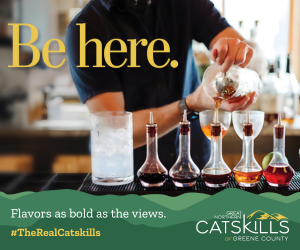When planning a wedding on the East Coast, keep in mind that the weather ranges from New York’s fickle climate to warmer temperatures further south, so it requires a lot of planning as well as contingencies.
Leaving the venue and its hassle aside, the whats and hows of the alcohol being served at the wedding, and with different weather conditions, can be tricky.
So, here’s a guide on how to store alcohol, no matter if it’s snowing, raining, or sunny. Let’s dive in!
What are the Drink Options?
Whether you choose the breathtaking mountains of the Hudson Valley or the vineyards of California, the booze needs to be around to kick start the special day. Try to stick to at least one or more of each type of alcohol: white, red, and sparkling wine, light and dark beer, and spirits like vodka, whiskey, tequila, rum, gin, etc. In addition, include some soft drink options for mixers or for people who don’t drink.
If the budget is tight, choose a limited drinks selection with only one type of red or white wine, light or dark beer, and a signature cocktail. Including a signature cocktail is a great addition to a wedding drinks menu because it marks the special day with something unique to each wedding.

Tips to Store Alcohol Until the Big Day
Avoid Sunlight and Air
Sunlight, as well as artificial light, breaks down the molecules and speeds up oxidation in alcohol, which affects the color and taste. That’s why bars usually have an interior storage section for their alcohol. In an experiment, it was found that scotch exposed to the sun for 15 days lost 40% of its color.
Similarly, when the bottles aren’t sealed well, being exposed to air, specifically oxygen, speeds up the aging process of alcohol. This degrades not only the flavor but also the quality and potency of the alcohol.
Extreme Temperature Changes are Bad
Although the right temperature for each alcohol is different, temperatures severely affect its quality. Liquor is best stored at room temperature between 55°F to 60°F. In cases when it’s too hot, alcohol will expand and evaporate.
For wines, cooler temperatures around 52°F to 57°F are ideal because anything warmer than that will speed up its aging process while also drying up the cork. Anything colder will stunt the development of that wine. White wines are usually served cold, so temperatures as low as 45°F work well.
Beer can be stored at room temperature as well, but it’s better to store lighter ones in cooler temperatures ranging from 45°F to 61°F because darker beers can withstand slightly higher temperatures.
What Belongs in the Fridge
Hard spirits like gin, whiskey, and vodka are perfectly fine at room temperature because of their high alcohol percentage, so refrigerating them is based on preferences. However, spirits like lower ABV liqueurs and fortified wines must be refrigerated to avoid oxidation.
Once refrigerated, these spirits go into a “hibernation” state and prolong their shelf life for weeks and even months. So, if the drinks menu has vermouth, port, sherry, coffee liqueur, Campari, or Aperol — make sure it’s chilled.
Including a signature cocktail is a great addition to a wedding drinks menu because it marks the special day with something unique to each wedding.
Keeping it Upright or on the Side
When talking about wine, sommeliers always encourage keeping the bottle horizontally. Doing so not only keeps the cork moist to avoid oxidation but also makes it easier to distinguish any sediment that forms before decanting. However when it comes to sparkling wines, they don’t need to be stored on their side and can be stored vertically like screwcap wines. This is due to the dissolved carbon dioxide bubbles it contains, which keeps the humidity levels higher.
Liquors are quite the opposite of wines because they must be kept upright. Liquor likes to stand because it prevents the cork from coming in contact with the liquid and seeping into it; this can alter the alcohol content and will disintegrate gradually. Beers are also stored vertically to avoid yeast ring formation.
Don’t Over-Order
Whether open or unopened, leaving alcohol lying around for a long time isn’t just wasting its potency but also burns a hole through the wedding budget. Before ordering, count the number of guests you’ll have and calculate one to two drinks per hour for each one.
This may seem like a small number, but keep in mind that for every party person downing a whiskey on the rocks, there’s a grandmother who’ll simply sip on a small glass of wine. Plus, some guests might not want to drink at all, so order accordingly.
Enjoy Your Big Day!
No matter what type of alcohol is served at weddings, it’s a good practice to ensure proper storage; this is to avoid compromising on the quality and taste but to also avoid any unwanted flavors that leave the guests wondering what went wrong. With that said, the tips above should be just enough to avoid any booze-related mishaps amidst the celebrations. Cheers!
Header photo by Leonardo Miranda on Unsplash





